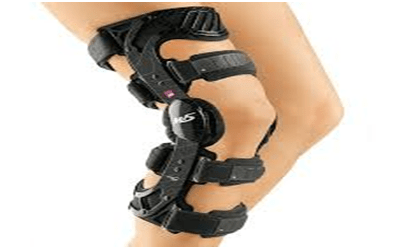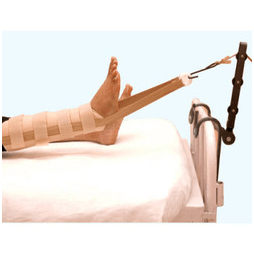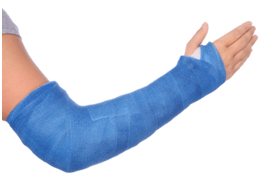Fractures & Traumatology
Home » Core Departments » Fractures & Traumatology
Introduction
A fracture is a break in the continuity of a bone, which can be caused by trauma, overuse, or diseases that weaken bones.
Types of Fractures
- Simple Fracture (Closed): The bone is broken but the skin remains intact.
- Stable fracture: The broken ends of the bone line up and are barely out of place.
- Compound Fracture (Open) : The broken bone pierces the skin, increasing the risk of infection.
- Complete Fracture: The bone is broken into two or more pieces.
- Incomplete Fracture: The bone is cracked but not broken all the way through.
- Greenstick Fracture: A partial fracture where one side of the bone bends, common in children.
- Comminuted Fracture: The bone is shattered into multiple pieces.
- Stress Fracture: A small crack in the bone caused by repetitive force or overuse
- Transverse Fracture: Bone is broken straight across.
- Oblique Fracture: Bone is broken at an angle.
- Spiral Fracture: Bone is broken by a twisting force, resulting in a spiral pattern.
- Segmental Fracture: Same bone is fractured in two places, creating a segment of bone that is not attached.
- Avulsion Fracture: A fragment of bone is pulled off by a tendon or ligament.
- Impact Fracture: Bone ends are driven into each other.
- Hairline (Fissure) Fracture: A thin crack in the bone, often difficult to detect.
- Buckle (Torus) Fracture: Compression of the bone results in a raised area or buckle; common in children.
- Pathologic Fracture: Occurs in a bone weakened by disease, such as osteoporosis or cancer.
- Depressed Fracture: Broken bone is pressed inward; typically occurs in skull fractures.
- Compression Fracture: Bone is crushed, commonly seen in the vertebrae.
- Spiral Fracture: As the name suggests, this is a kind of fracture that spirals around the bone. Spiral fractures occur in long bones in the body, usually in the femur, tibia, or fibula in the legs. However, they can occur in the long bones of the arms. Spiral fractures are caused by twisting injuries sustained during sports, during a physical attack, or in an accident.
Causes
The most common causes of fractures are:
- Trauma: A fall, a motor vehicle accident, or a tackle during a football game can all result in fractures.
- Osteoporosis: This disorder weakens bones and makes them more likely to break.
- Overuse: Repetitive motion can tire muscles and place more force on bone. This can result in stress fractures. Stress fractures are more common in athletes.
Symptoms
Common symptoms of a fracture include pain, swelling, bruising, deformity, and inability to use the affected limb. There may also be an audible snap or grinding noise at the time of injury.
Your doctor will do a careful examination to assess your overall condition, as well as the extent of the injury. He or she will talk with you about how the injury occurred, your symptoms, and medical history.
The most common way to evaluate a fracture is with x-rays, which provide clear images of bone. Your doctor will likely use an x-ray to verify the diagnosis. X-rays can show whether a bone is intact or broken. They can also show the type of fracture and exactly where it is located within the bone.
Treatment
All forms of treatment of broken bones follow one basic rule: the broken pieces must be put back into position and prevented from moving out of place until they are healed. In many cases, the doctor will restore parts of a broken bone back to the original position. The technical term for this process is “reduction.”
Broken bone ends heal by “knitting” back together with new bone being formed around the edge of the broken parts.
Surgery is sometimes required to treat a fracture. The type of treatment required depends on the severity of the break, whether it is “open” or “closed,” and the specific bone involved. For example, a broken bone in the spine (vertebra) is treated differently from a broken leg bone or a broken hip.


Functional Cast or Brace
The cast or brace allows limited or “controlled” movement of nearby joints. This treatment is desirable for some, but not all, fractures.


Traction
Traction is usually used to align a bone or bones by a gentle, steady pulling action.


Cast Immobilization
A plaster or fiberglass cast is the most common type of fracture treatment, because most broken bones can heal successfully once they have been repositioned and a cast has been applied to keep the broken ends in proper position while they heal.
Some of the most practiced Bone Surgeries are:
Open Reduction and Internal Fixation (ORIF)
- Description: Surgical procedure where the fracture is first reduced (aligned) and then stabilized using internal fixation devices such as plates, screws, or rods.
- Indications: Used for fractures that cannot be aligned properly with non-surgical methods, complex fractures, or fractures involving joints.
External Fixation
- Description: Stabilization of the fracture using a frame outside the body connected to the bone with pins or wires.
- Indications: Used for severe fractures with extensive soft tissue damage, open fractures, or when internal fixation is not possible.
Intramedullary Nailing (IM Nailing)
- Description: A metal rod is inserted into the marrow canal of the bone to keep the fractured bone in proper position.
- Indications: Commonly used for fractures of long bones such as the femur, tibia, and humerus.
Percutaneous Pinning
- Description: Minimally invasive procedure where pins or wires are inserted through the skin to hold the bone fragments in place.
- Indications: Often used for fractures in children, simple fractures, or fractures of small bones like those in the hand or wrist.
Bone Grafting
- Description: Transplanting bone tissue to repair and rebuild damaged bones. The graft can be autograft (from the patient’s own body), allograft (from a donor), or synthetic.
- Indications: Used when there is a significant bone loss or in nonunion fractures where the bone fails to heal.
Arthroplasty
- Description: Surgical replacement or reconstruction of a joint, often using prosthetic implants.
- Indications: Primarily used for fractures involving joint surfaces, especially in older patients, such as hip fractures.
Closed Reduction and Internal Fixation (CRIF)
- Description: Non-surgical alignment of the fracture followed by internal fixation with devices like screws or rods.
- Indications: Used when a closed reduction is sufficient to align the fracture but requires internal fixation for stability.
Hemiarthroplasty
- Description: Partial joint replacement surgery, where one part of the joint is replaced with a prosthetic implant.
- Indications: Commonly used for fractures of the femoral head or neck, especially in elderly patients with hip fractures.
Dynamic Compression Plating (DCP)
- Description: Application of a specially designed plate that compresses the fracture site, promoting bone healing.
- Indications: Used for fractures that need stable fixation with compression to enhance healing, typically in the long bones.
First Aid for Bone Fractures
- Immobilize the affected area using a splint or sling.
- Apply ice to reduce swelling.
- Elevate the injured limb if possible.
- Seek medical attention immediately, especially for compound fractures.
Recovery
Fractures take several weeks to several months to heal, depending on the extent of the injury and how well you follow your doctor’s advice. Pain usually stops long before the fracture is solid enough to handle the stresses of normal activity.
Even after your cast or brace is removed, you may need to continue limiting your movement until the bone is solid enough for normal activity.
During your recovery you will likely lose muscle strength in the injured area. Specific exercises will help you restore normal muscle strength, joint motion, and flexibility.
Bone healing involves several stages:
- Inflammation: Blood clots form around the fracture within hours to days.
- Bone Production: A soft callus of collagen forms within a few weeks, followed by a hard callus as new bone forms.
- Bone Remodeling: The bone gradually reshapes to its original form over months to years.
Complications
Potential complications include infection (especially in open fractures), nonunion or delayed union (failure to heal properly), malunion (healing in an incorrect position), and damage to surrounding tissues like nerves and blood vessels.
Prevention
To prevent fractures, maintain good bone health through a diet rich in calcium and vitamin D, engage in regular weight-bearing exercises, use protective gear during sports, and avoid high-risk activities that could lead to falls or trauma.
